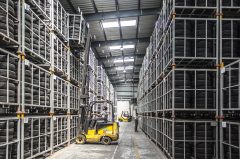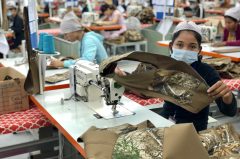China’s market economy is naturally maturing and rocky trade negotiations between the U.S. and China seem to be producing little more than tariffs as this is being written. Among its neighbors in the Asia Pacific Region (APAC), Vietnam’s manufacturing capabilities have drawn attention for that country’s efforts to attract customers. As a manufacturing sourcing company with a presence in the region since 2002, we at Avela Corporation thought now might be a good time to step back and take a look at both countries and their positions in the global manufacturing landscape.
Avela has been locating and vetting capable and reliable manufacturing sources in China for our clients since 2002. In that time it has been amazing to watch the power of a capitalistic economy to uplift a population. Through free market capitalism, some 700 million Chinese people have moved from utter poverty into a thriving middle class. With a population of 1.4 billion, there are of course some still below middle class but there are also some above. Any way you cut it, it’s an amazing story.
In comparison, Vietnam has a population of about 95 million and is behind China in the development of its manufacturing base. This makes sense, given that Vietnam’s free market system is some fifteen years younger than China’s. The Vietnamese government seems anxious to make up for lost time, however, and manufacturing in Vietnam is becoming a viable and in some cases competitive option. In fact, China is Vietnam’s largest trading partner. To serve our clients by considering the most options for manufacturing in the Asia Pacific, we have established an office in Vietnam in addition to our office in Shanghai and our home office in Houston.

But how do Chinese manufacturing and Vietnamese manufacturing stack up against each other? It’s not an easy question to answer, so we will devote this first blog to “setting the table” for discussion. It might seem a bit dense, but it will supply some background context.
To start with, let’s look at the business environment of the two countries. We consulted the Heritage Foundation for their business freedom rating, which reflects how much government interferes with business through regulations, price controls and the like. The organization gave China a score of 65.5% (Moderately Free) and Vietnam 56.2% (Mostly Unfree). For comparison, the United States was rated 84% (Free).
The low score for Vietnam may reflect the vestiges of the country’s previous rigidly planned economy, which the government began moving away from in 1986. For instance, as of 2015 (the last year that we have solid data for, according to Economy Watch [http://www.economywatch.com/economic-statistics/country/Vietnam/]), Vietnamese state owned enterprises still accounted for 40% of the country’s Gross Domestic Product. But as we noted, the country is aggressively embracing economic reform, and this is reflected in the following ratings.
In the area of trade freedom, the Vietnam government has been making great strides in eliminating tariffs, investment restrictions and other impediments. It shows in Vietnam’s rating of 79% (Mostly Free), over China’s 73% (also Mostly Free). In this area the United States rates 87% (Free).
Vietnam’s labor market is rather flexible and dynamic, so Heritage rates it at 73% (Moderately Free), and compared to over China 64% (Moderately Free) and compared to the United States at 89% (Free).
While manufacturing wages in China and Vietnam have been rising from year to year, average wages in Vietnam have been consistently just a little less than half of China’s. Vietnam has a younger population: Vietnam’s median age is about 31 years old, compared to China’s median age of about 37 years old.
Now that the table is set, our next blog will delve into a consideration of basic manufacturing comparisons between the China and Vietnam, along with our analysis of the trend we see developing.
Until then, please do not hesitate to contact Avela for your overseas sourcing needs. Our mission is to represent our clients in the Asia Pacific, finding and vetting capable and reliable sources for manufacturing and services in APAC.









Leave a Reply